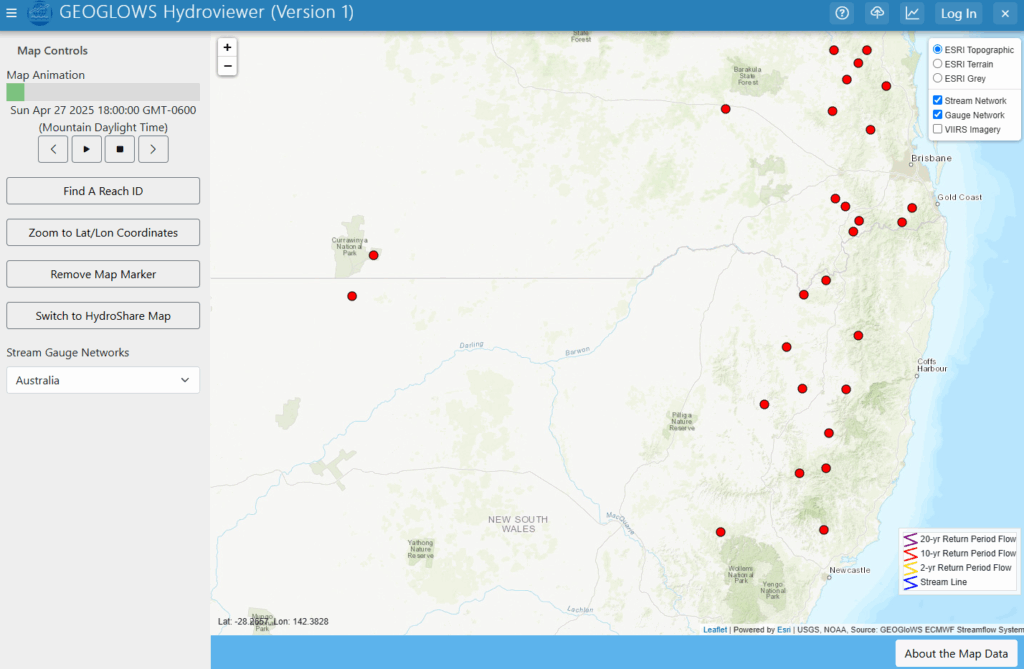Your cart is currently empty!

Knowledge Sharing in Action: Best Practices from the Tethys Community
—
Behind every successful environmental application lies something less visible but equally important: knowledge sharing. When developers document their work thoroughly, explain their design choices, and communicate openly about challenges, they multiply the impact of their innovations. In the Tethys community, this culture of shared learning has enabled applications to evolve from local solutions to global resources. As environmental challenges grow increasingly complex, our ability to build upon each other’s insights becomes not just valuable, but essential for progress. Let’s explore how knowledge sharing manifests within our community and how it creates ripple effects of positive impact across Earth science.
Documentation as a Foundation
The success of tools like the GEOGLOWS Hydroviewer demonstrates the power of comprehensive documentation. When Riley Hales and Jorge Luis Sanchez developed this application, they didn’t just share code—they provided clear explanations of how the tool processes streamflow forecasts from the ECMWF Global Streamflow Service. This documentation enables researchers worldwide to adapt the tool for their local needs.
Documentation serves as a bridge between developers and future adopters. By detailing not only how the system works but also the rationale behind design choices, the GEOGLOWS team has created a pathway for others to build upon their foundation rather than starting from scratch. This approach accelerates innovation while ensuring that best practices carry forward from one implementation to the next.
Learning from Implementation Success
Nepal’s Flash Flood Prediction Tool offers another compelling example of effective knowledge sharing. The development team documented not just the technical aspects of monitoring 12,000 river segments, but also explained how the system translates complex data into actionable forecasts. This detailed documentation helps other regions understand how to implement similar early warning systems.
The team’s willingness to share implementation challenges proved particularly valuable. By documenting how they overcame issues like data latency and communication with remote communities, they provided practical insights that rarely appear in academic publications. These real-world lessons help new implementations avoid common pitfalls and adopt solutions proven effective in similar contexts.

Making Complex Ideas Accessible
The Community Streamflow Evaluation System (CSES) shows how technical documentation can bridge the gap between developers and users. The Alabama Water Institute team carefully documented both the technical underpinnings and the practical applications of their national-scale streamflow modeling system. This dual approach helps users understand not just how to use the tool, but why certain design choices were made.
What makes the CSES documentation particularly effective is its layered approach. Newcomers can access straightforward explanations of core concepts, while technical users can dive deeper into modeling approaches and data structures. This multi-level documentation ensures that users at all technical levels can engage meaningfully with the system, expanding its reach and impact beyond specialized audiences.
Practical Communication Channels
Currently, the Tethys community shares knowledge through two primary channels: the Tethys Platform GitHub forums for technical discussions and problem-solving, and direct email communication with the Tethys team for specific inquiries. While these channels are focused primarily on technical support, they’ve proven effective for sharing implementation experiences and best practices.
The GitHub forums can be a useful repository where community members document solutions to common challenges. This living archive allows new users to benefit from past discussions rather than facing the same obstacles in isolation. Meanwhile, direct communication with the Tethys team provides a pathway for addressing specialized questions that might not benefit from broader community discussion. Together, these complementary channels ensure that knowledge flows efficiently throughout the community.
As the community grows, additional channels may emerge to support more specialized forms of knowledge sharing. From implementation case studies to technical deep dives, these resources will further strengthen the foundation of shared understanding that supports Tethys applications.
Supporting New Users
The National Water Center’s Operations Dashboard exemplifies how documentation can support user adoption. By clearly explaining how to display hydrometeorologically significant visualization services and create custom dashboards, the team enables other organizations to effectively implement similar systems for their needs.
This documentation focuses not just on technical functionality but also on the decision-making process behind the dashboard’s development. By explaining how they balanced information density with usability, the team provides insights that help others design more effective interfaces for their own applications. This type of contextual documentation helps new users understand not just how to replicate a solution, but how to adapt it thoughtfully for different requirements.
Looking Forward
As the Tethys community grows, the importance of knowledge sharing becomes increasingly vital. Clear documentation and communication help new users become active contributors, ensuring the sustainability of Earth science tools. Whether explaining basic concepts or detailing advanced implementations, effective knowledge sharing builds bridges between expertise levels and disciplines.
For those looking to contribute to knowledge sharing within the community, the Tethys Platform GitHub forums provide a starting point. By documenting your experiences and solutions, you help build a stronger foundation for future Earth scientists and developers.
Remember that effective knowledge sharing isn’t just about technical details – it’s about making Earth science tools more accessible and useful for everyone. Through careful documentation and clear communication, we can help ensure that innovative solutions reach the communities that need them most. As environmental challenges continue to evolve, our collective knowledge—shared openly and accessibly—becomes one of our most powerful tools for developing effective responses.

Leave a Reply